In Rome, the Colosseum Archaeological Park opens for the first time to the public the so-called Passage of Commodus, a vaulted underground passageway, partially illuminated and ventilated by wolf’s mouths, which in the imperial age connected the stage of honor of the Flavian Amphitheater with the exterior of the monument. The corridor, originally reserved for the high hierarchies of the Empire, today represents one of the most fascinating testimonies to the complex architecture of the Colosseum and its historical stratification.
The Passage of Commodus united the pulvinar, the imperial box located at the southern end of the minor axis of the amphitheater, to the outside, allowing emperors to reach their tribune without crossing the areas designated for the public. Not planned during the construction of the Colosseum, it was carved out later, at the turn of the first and second centuries AD, by digging directly into the foundations of the building. Its association with the name of the emperor Commodus (180-192 AD) derives from an episode handed down by the historian Cassius Dione, according to whom it was precisely in an obscure passage of the Amphitheater that the emperor, a great enthusiast and practitioner of gladiatorial combat, was the victim of an assassination attempt by a conspirator.
The restoration, which lasted from October 2024 to September 2025, was carried out with funds from the Colosseum Archaeological Park as part of extraordinary maintenance activities, with work on the restoration of stucco and plasterwork, the reconstruction of the collapsed portion of the vault, the implementation of a new lighting system and the creation of a walkway walkway. Thanks to European funds from the NextGenerationEU program, under Mission 1 “Digitization, Innovation, Competitiveness and Culture,” accessibility works were financed, including a retractable staircase to overcome architectural barriers, a tactile map reproducing the stucco decorations and a digital video reconstructing the iconography of the ancient decorative apparatus.
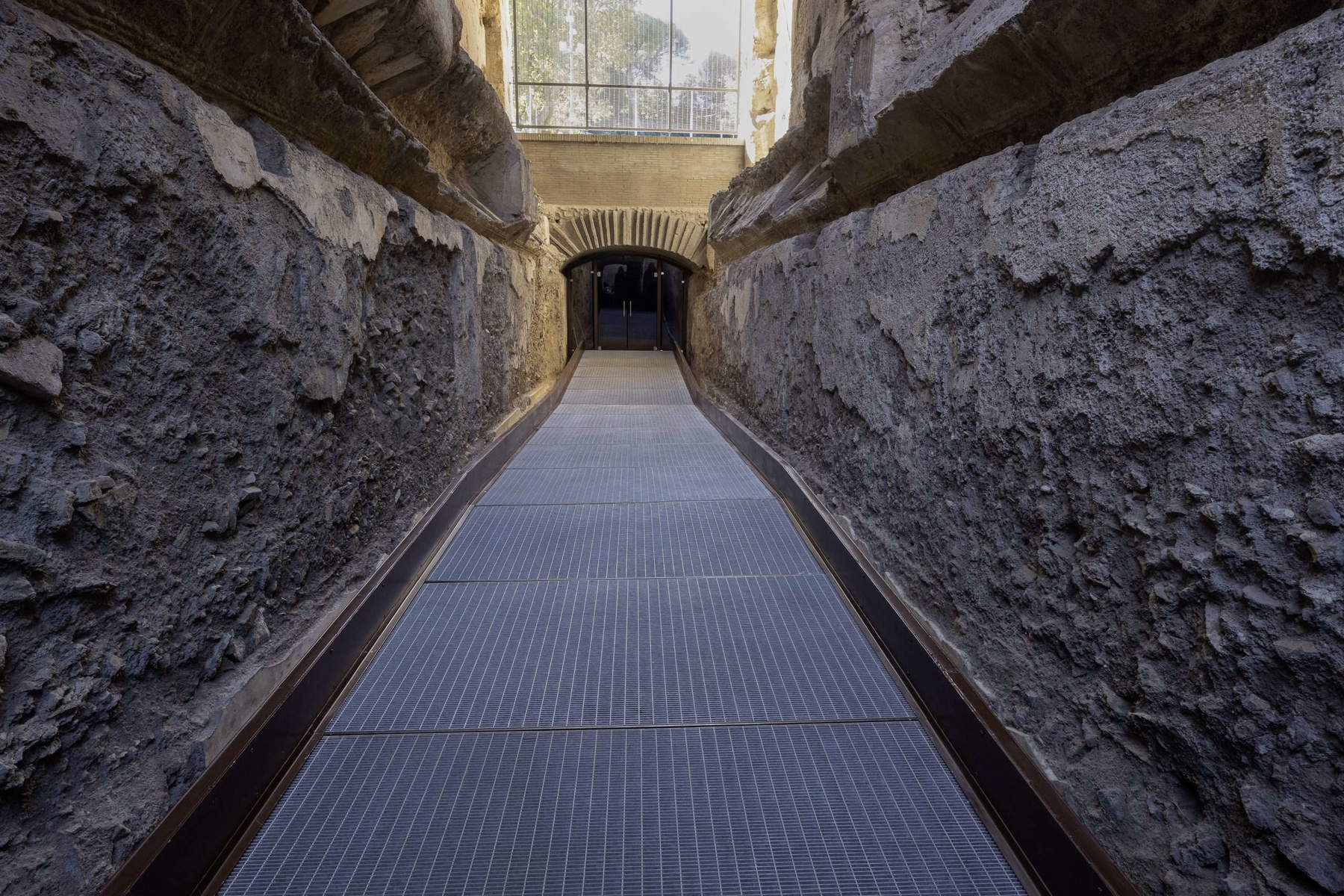
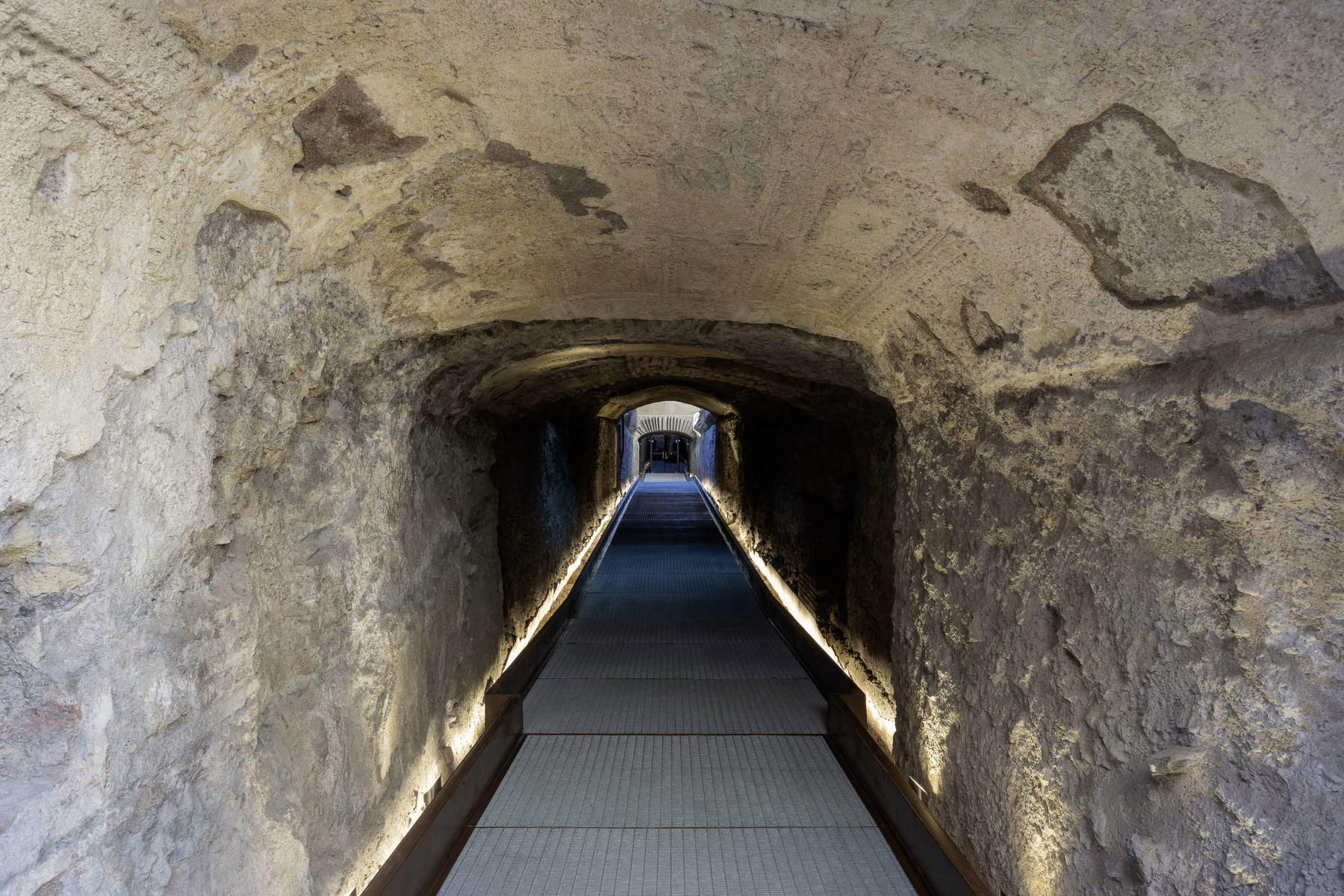
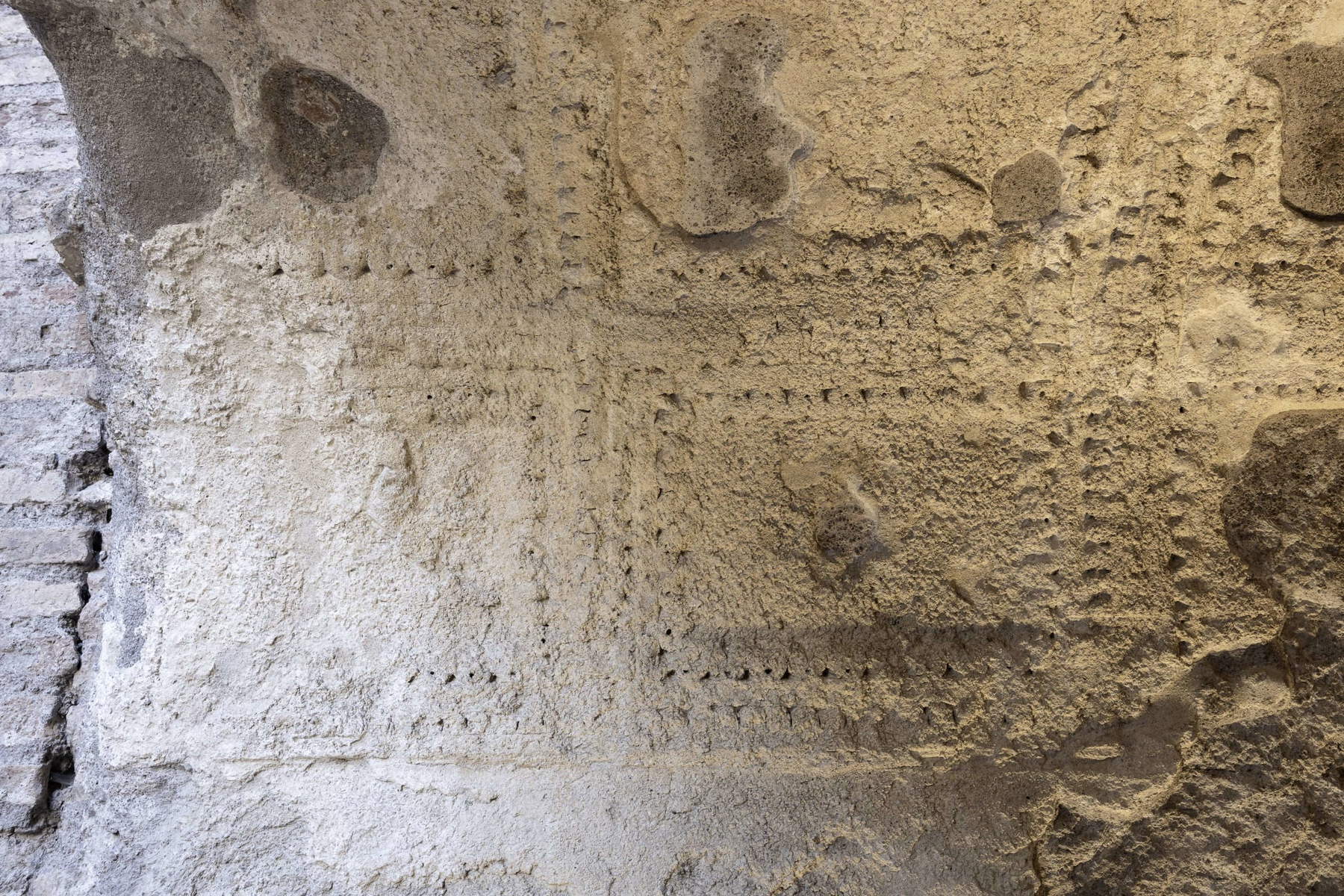
“For the Colosseum Archaeological Park,” says director Alfonsina Russo, “the opening to the public of the Passage of Commodus, the Emperor’s exclusive place, represents an important achievement. The PArCo’s efforts made it possible to overcome the difficulties related to the maintenance of the underground gallery, which had always been closed to the public due to problems related to infiltration and microclimate, problems that had, among other things, severely compromised the decorative apparatus. The additional work to overcome architectural barriers, carried out with funds from the PNRR and completed a year ahead of the timetable established by the European Union, was fundamental to the enhancement and physical and cognitive accessibility of the site.”
“The opening of the so-called Passage of Commodus,” comments Massimo Osanna, director general of museums, “represents a significant achievement, the result of complex work that has been able to combine research, protection and enhancement. It is particularly relevant that this result has also been made possible thanks to the resources of the National Recovery and Resilience Plan dedicated to accessibility: an extraordinary opportunity that has made it possible to intervene in a concrete way on emblematic monuments - such as the Colosseum - introducing innovative solutions that respect the historical context to ensure their full usability. Mediation tools such as the tactile map and reconstructive video of the decorative apparatus testify to the commitment to make cultural heritage truly accessible and inclusive, for all audiences. The NRRP thus proves to be a valuable opportunity to rethink the relationship between cultural places and the community, under the banner of welcome, sustainability and innovation.”
The opening to the public of this environment, which has remained inaccessible until now, is of exceptional significance. Not only is a fascinating place linked to the history and political and spectacular life of imperial Rome returned to visitors, but for the first time restoration has made the ancient surfaces fully legible. The walls of the corridor, once covered with marble - of which the metal brackets used to fix the slabs remain visible - were later decorated with painted plaster depicting landscape subjects. Stuccoes with mythological scenes inspired by the myth of Dionysus and Ariadne are still preserved on the vault, while the niches at the entrance feature reliefs with subjects related to amphitheatrical performances, such as boar hunts, bear fights, acrobats, and figures emerging from doors from which animals appear to emerge.
Thanks to new technologies, visitors will be able to better understand the subjects and function of the corridor: a tactile map and a video with a digital restitution of the decorations are available within the path, while an escalator, which overlaps without covering the six nineteenth-century steps made to overcome the difference in level with the arena, is transformed into a lifting platform for people with reduced mobility.
The opening to the public, scheduled for Oct. 27, 2025, is only the first phase of a larger project. In fact, a second restoration site, dedicated to the section of the corridor that extends beyond the perimeter of the Colosseum, is scheduled by the beginning of the new year. During the work, visitors will be able to directly observe the restoration activities of plaster, marble and stucco through a glass door placed at the end of the tour route, thus living an immersive experience between ancient history and heritage care.
The underground gallery known as the Passage of Commodus was built between the end of Domitian’s reign and the beginning of Trajan’s, as attested by the brick stamps found in the masonry. The work involved significant changes to the structures and plumbing of the amphitheater, but did not compromise its operation. The corridor, which is not rectilinear, consists of three arms: two diverging in an east-west direction and a third oriented north-south, equipped with skylights at regular intervals to provide lighting and ventilation. Leaving the amphitheater, the route bends eastward, probably in the direction of the gymnasiums or the Caelian Hill, although the exact destination remains uncertain.
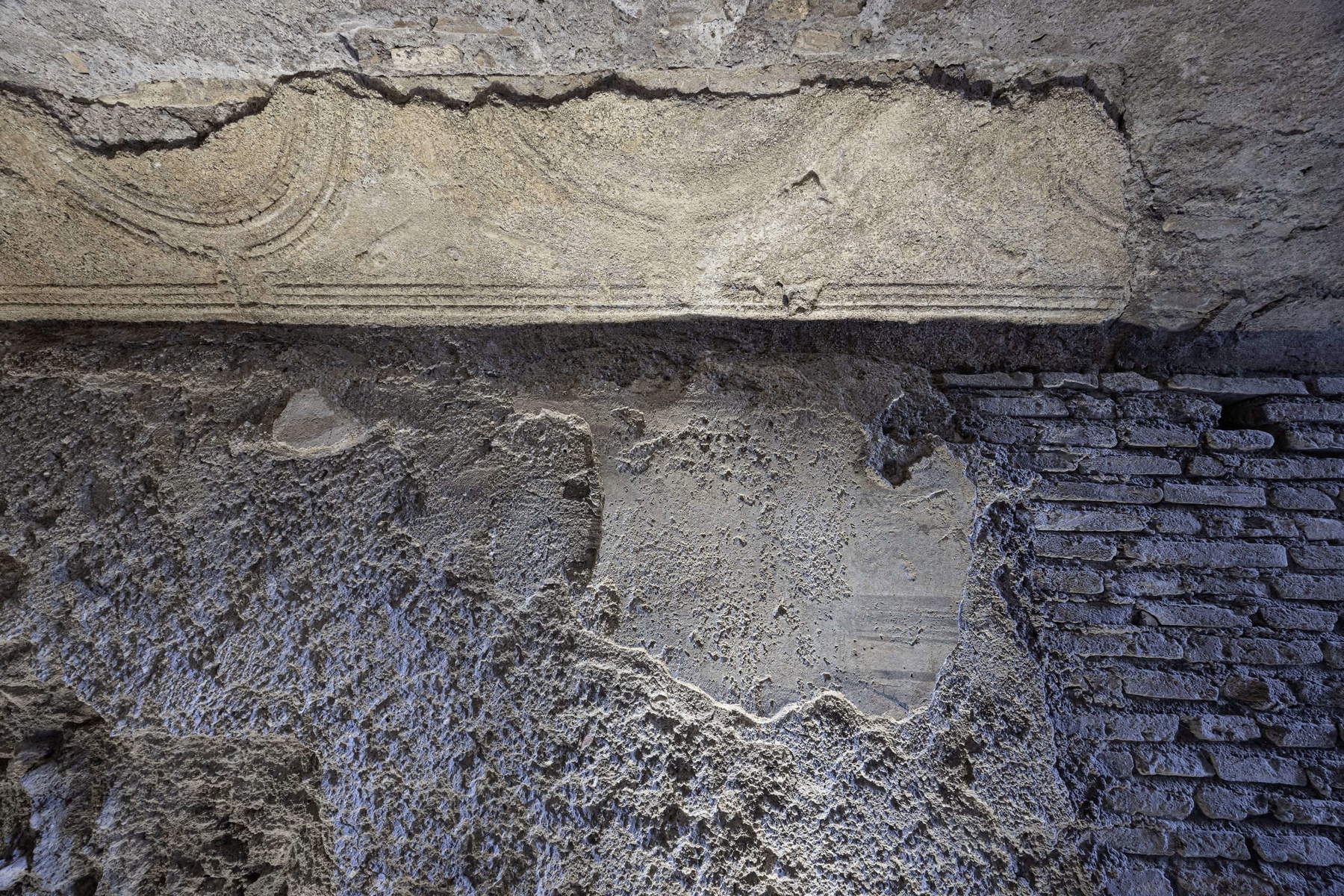
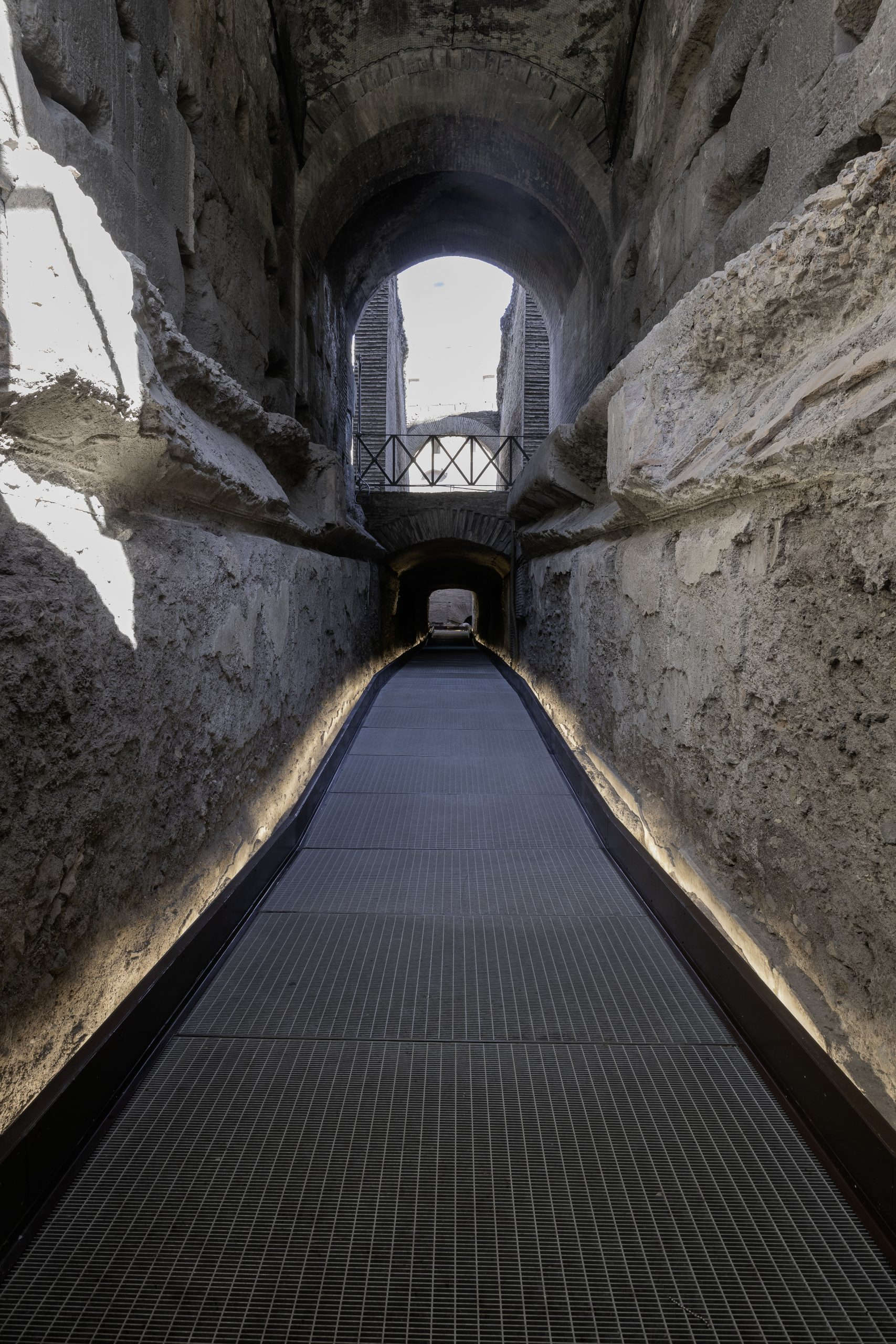
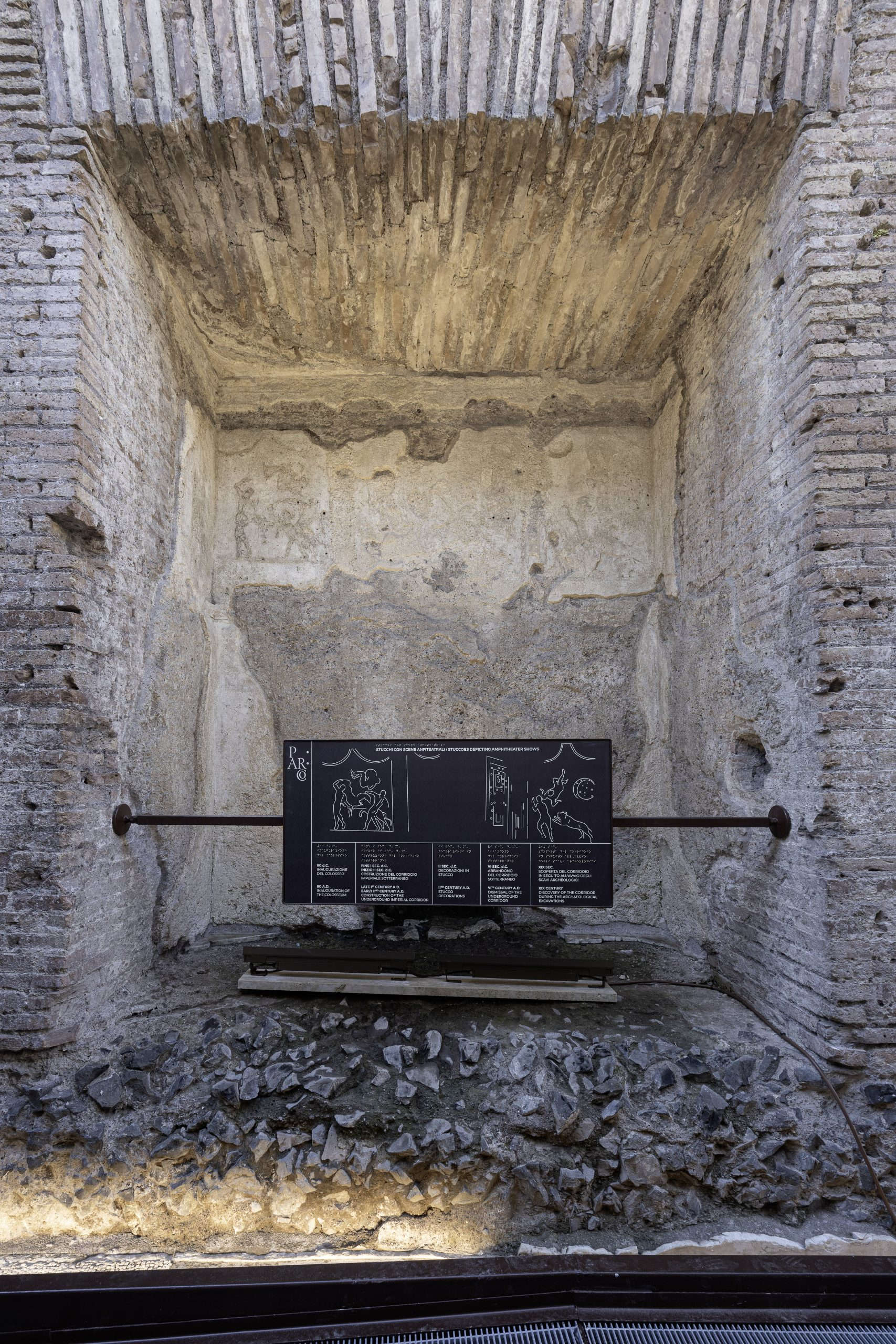
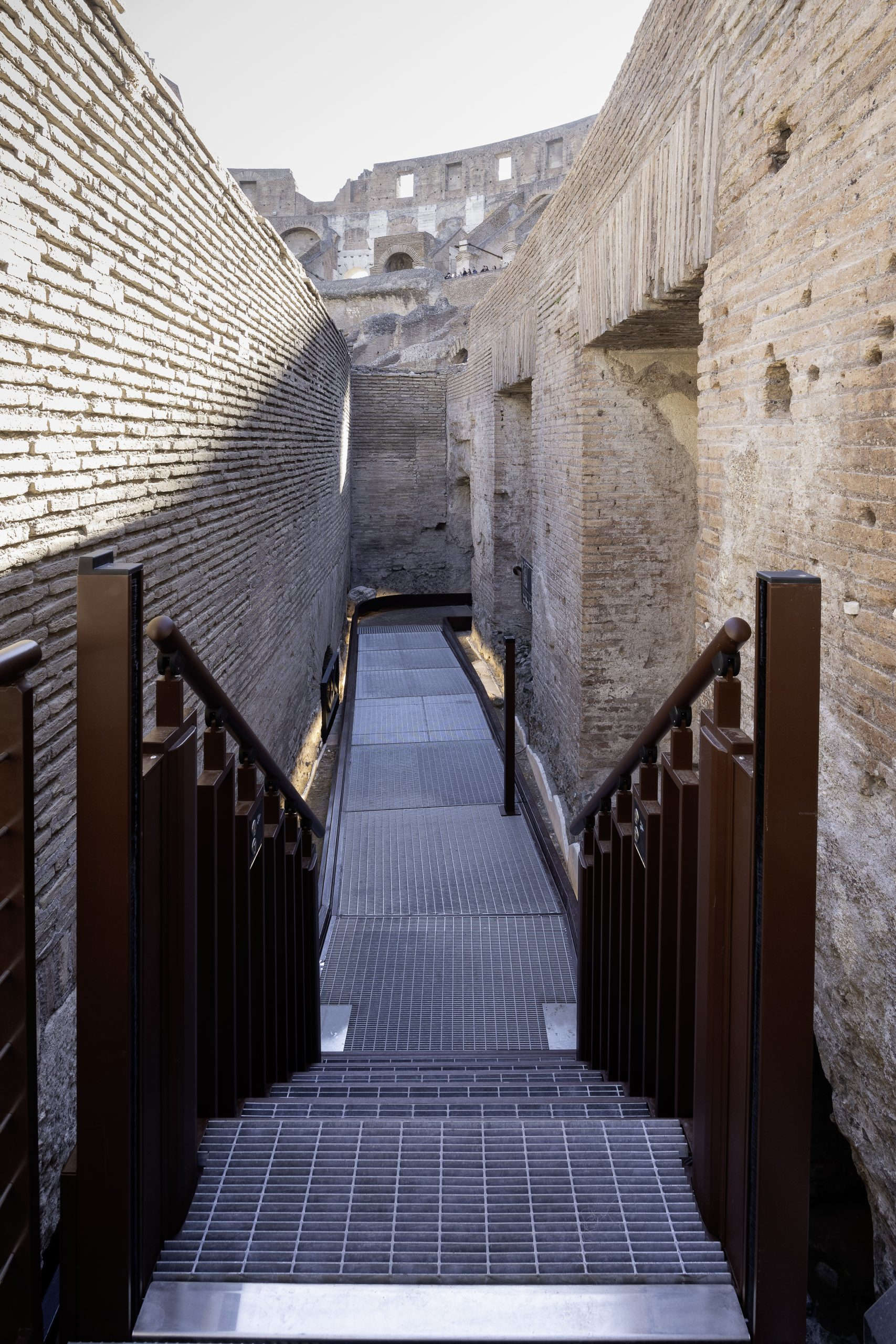
The nobility of its function is evidenced by the luxurious marble and stucco coverings that originally decorated it, which were modified several times over the centuries until the end of the gladiatorial shows. At first the vault was ornamented with stucco lacunars and the walls with marble panels with cornices and plinths; later, when the marble was removed, frescoes on a white background with plant motifs, animals, and isolated figures were created. The stucco scenes on the vault depict Dionysian episodes such as the divine wedding of Dionysus and Ariadne, Ariadne abandoned by Theseus, and perhaps Hero and Leander. In contrast, the two perimeter niches, part of the service gallery around the arena floor, preserve scenes of amphitheater performances. All that remains of the original pavement is a small portion of the later mosaic, with black and white tiles, visible in the first section of the walkway.
The Passage of Commodus was discovered between 1810 and 1814 during excavations conducted by the French government with the assistance of architect Carlo Lucangeli. In 1874 it was again excavated by Pietro Rosa and further investigated in the 1990s, until the restorations conducted by the Colosseum Archaeological Park between 2020 and 2021, which was followed by the major intervention of 2024-2025 that led to the current opening. The restoration of the surfaces, directed by Angelica Pujia, involved the stucco decoration with coffered motif of the vault and the wall paintings. The intervention removed dust deposits and biological patinas, consolidated the decohesive parts and re-adhered the pictorial layers using laser tools. The second phase, scheduled for early 2026, will involve the covered section of the gallery, accessible to view through a glass door, which will allow the public to follow the restoration almost in real time.
On a structural level, the reconstruction of the collapsed portion of the vault - designed by engineer Stefano Podestà - aimed to protect and enhance the artifact. The new vault, made of corten steel, was dry-faced to reduce interference with historic structures and make the distinction between ancient and modern visible. The lighting, designed by architect Francesca Storaro, recreates the natural light that once filtered through the skylights, emphasizing the profile of the passage and the surviving decorations.
To ensure full accessibility, a galvanized steel walkway was installed with miniature spotlights illuminating the walls and stucco work. The PNRR Culture project also allowed for the construction of an additional section of walkway, the expansion of the lighting system, and the introduction of a staircase convertible into an elevating platform, an innovative solution that combines functionality and respect for the historic layout.
The new technologies applied to the route have also allowed the digital reconstruction of the original decorative apparatus: detailed surveys and analysis of the wall stratigraphies have made it possible to propose a reconstructive reading, available on tactile support and in video, accessible via QR code during the visit.
The Passage of Commodus will be open to visitors from October 27, 2025, with public openings on Mondays and Wednesdays from 1 to 4 p.m. Educational tours in three languages - Italian at 2 p.m., English at 3 p.m., and Spanish at 1 p.m. - are planned, with groups of up to eight people and a duration of 25 minutes. Entrance is from Colosseum Square, Valadier Spur, and tickets are available on the official website of the Colosseum Archaeological Park.
With this opening, the Colosseum Archaeological Park is adding a new chapter to the knowledge of Rome’s most famous monument, offering visitors not only the excitement of walking a path once reserved for emperors, but also the chance to witness, almost live, the continuous work of protection and enhancement that ensures the survival and legibility of a unique heritage in the world.
 |
| Colosseum opens Passage of Commodus to public after year-long restoration |
Warning: the translation into English of the original Italian article was created using automatic tools. We undertake to review all articles, but we do not guarantee the total absence of inaccuracies in the translation due to the program. You can find the original by clicking on the ITA button. If you find any mistake,please contact us.